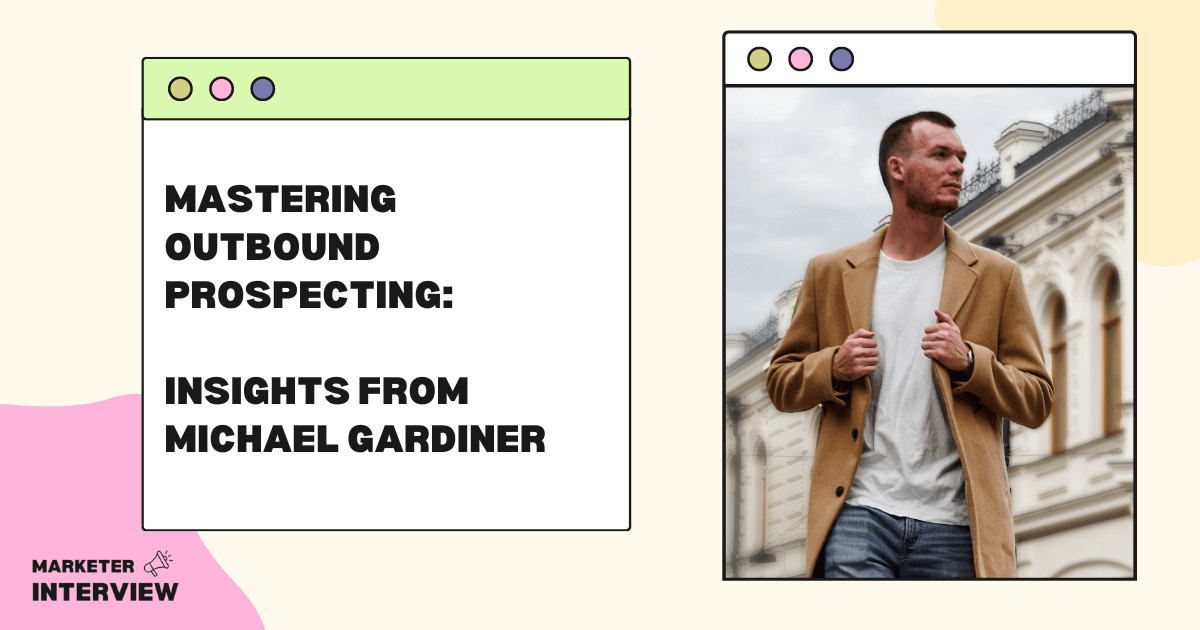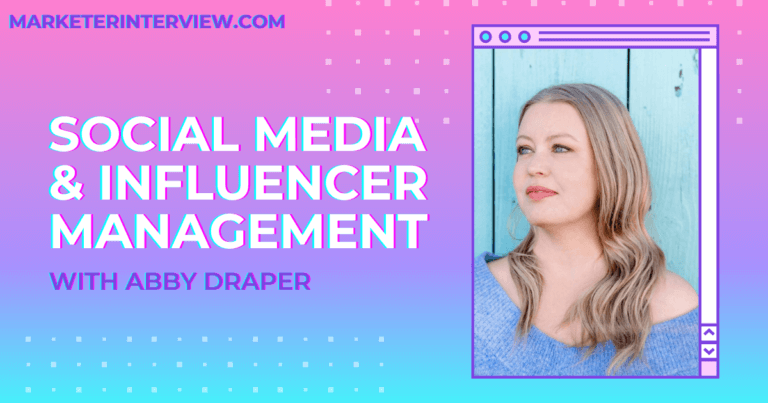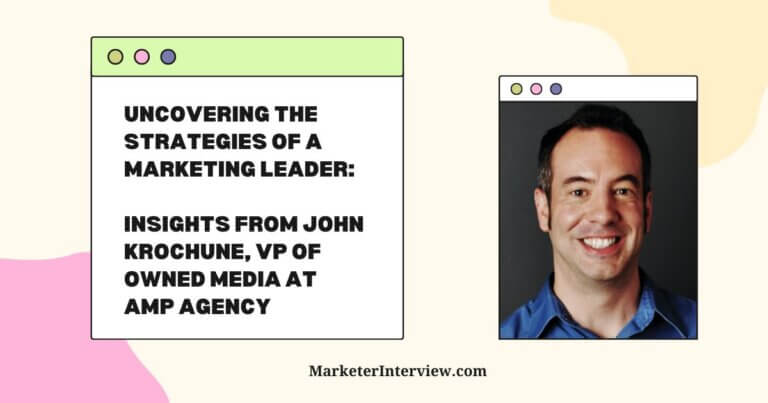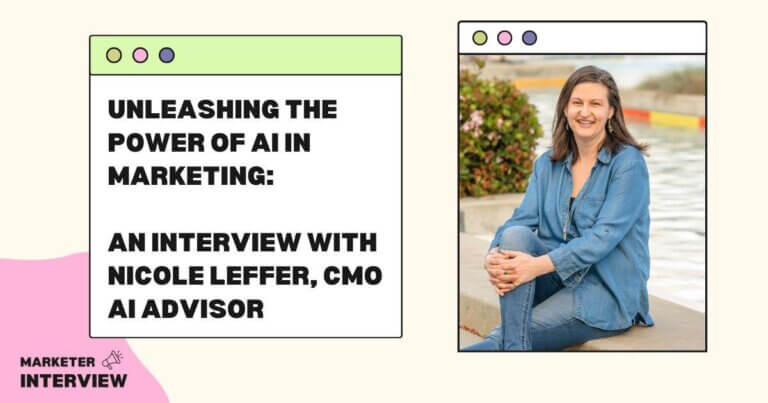Mastering Outbound Prospecting: Insights from Michael Gardiner
Welcome to another insightful interview on Marketer Interview!
Today, we have the pleasure of sitting down with Michael Gardiner, the Founder of DFY Meetings.
Michael has successfully carved his path in the marketing world, specializing in outbound prospecting. He has worked with various B2B businesses, from startups to Fortune 50 companies.
You’re in for a treat if you want to enhance your outbound prospecting game. Let’s jump into Michael’s journey and learn from his experiences.
Contents
- 1 Can you share your journey of entering the marketing field and eventually finding your niche in outbound prospecting?
- 2 Outbound prospecting is a specialized area. What inspired you to focus your efforts on this particular aspect of marketing?
- 3 Your company, Done For You Meetings, emphasizes building cold email infrastructure. Could you elaborate on what this entails and why it’s crucial for businesses?
- 4 Can you walk us through the typical process you follow when working with a new client to develop their cold email infrastructure?
- 5 Training clients’ teams to manage the system in-house is a unique approach. What challenges do businesses commonly face during this transition, and how do you help them overcome them?
- 6 With your experience across various B2B sectors, could you share a standout success story where your cold email strategies significantly impacted a client’s business growth?
- 7 Cold emailing often faces criticisms of being spammy or ineffective. How do you ensure your cold email campaigns are highly targeted and yield positive results?
- 8 In the dynamic landscape of marketing tools and software, which specific ones do you rely on for optimizing your outbound prospecting efforts?
- 9 You have a YouTube channel where you share insights. Please tell us more about the content you create and the value it brings to your audience.
- 10 As someone deeply involved in outbound prospecting, what trends do you foresee in this field, and how should marketers prepare to adapt?
My marketing journey was somewhat unintentional, or rather a mistake.
In 2015, I was in high school, and just for fun, I started growing a few themed Instagram pages (cars, travel, watches, etc.).
Surprisingly, some of these pages caught on, and I learned to repeat this process.
Fast forward about a year, and I have hundreds of thousands of followers between a network of accounts.
Because of this network, I could sell promotions as an “influencer” to different types of companies, which opened my eyes to online business.
From there, I started many businesses, some failing, others doing well, and most somewhere in the middle.
I found that I was good at and enjoyed getting sales meetings and closing deals – something I learned many others struggle with and some even hate to do.
This made me fully embrace my prospecting skills and grow Done For You Meetings to what it is today.
Outbound prospecting is a specialized area. What inspired you to focus your efforts on this particular aspect of marketing?
My favorite thing about outbound prospecting is that it is so directly tied to a clear ROI.
Compared to more creative marketing that is (although important) less tangible, outbound prospecting is very black and white.
Your success is tied to clear metrics such as:
- Open rate
- Reply rate
- Lead rate
- Booked call rate
- Close rate
Because of these rigid metrics, it’s easy to justify the cost to a prospect and thus charge larger retainers.
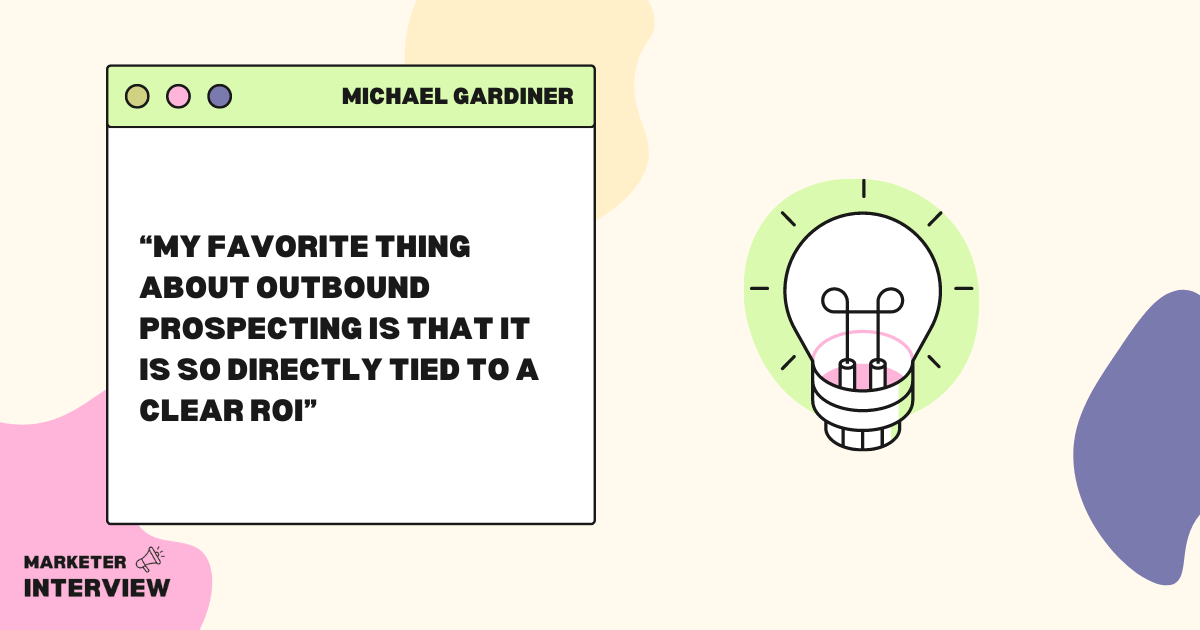
Your company, Done For You Meetings, emphasizes building cold email infrastructure. Could you elaborate on what this entails and why it’s crucial for businesses?
We generally work with larger B2B companies, and many prefer to own their outbound prospecting processes rather than outsource.
There are many reasons for this, but the core reasons are:
- Owning the process increases their value if they sell
- Being able to control costs significantly when scaling campaigns
- Making use of their existing sales team members
Rather than fight this to sell retainer-based outsourced cold email campaigns, I embraced this, and I set up the infrastructure these companies need to be successful with cold email and train their teams to manage campaigns.
Can you walk us through the typical process you follow when working with a new client to develop their cold email infrastructure?
Cold email can be broken into a few core parts. I help clients with each of these, including:
- Tech: Domains, emails, sending tools & everything else related to getting into the inbox of your prospect
- Lists: The lists of contacts that you’re going to be reaching out to
- Scripts: The messaging sequences that’ll be sent to your list of prospects
- Appointment setting: The conversations you’ll have with interested prospects before moving them to a demo call
For each of these areas, I help companies build strategies to implement, setting up the required tech stacks and SOPs so that their teams can easily follow along, and 1:1 training.
Training clients’ teams to manage the system in-house is a unique approach. What challenges do businesses commonly face during this transition, and how do you help them overcome them?
The most common challenge companies face with running cold emails in-house is understanding what to do when an issue arises.
The good thing is that there are only so many issues you can run into with cold email, and as I’ve worked with over 100 companies now, I’ve fixed almost any issue a client may encounter.
I detail the technical and strategic solutions to these common problems within the SOPs (standard operating procedures) that I provide to companies I work with.
My favorite client success story is a TikTok ads agency we worked with a few years ago.
The client had a small TikTok ads agency that was working with eCommerce brands and had excellent service but struggled with getting clients consistently.
We were able to help them book 79 discovery calls, including multiple Fortune 5,000 companies, in just 5 months of working with us.
This led to them growing significantly and becoming such an attractive agency that they were able to get acquired by a more prominent marketing agency.
Cold emailing often faces criticisms of being spammy or ineffective. How do you ensure your cold email campaigns are highly targeted and yield positive results?
People want things that they want. This statement is obvious but not respected in cold email commonly.
The trick to having a cold email come across professionally is relevance.
Be specific about who you are targeting. Don’t sell “marketing to businesses”. Sell Google Ads to Nail salons, for example. Or, even worse, don’t sell Google Ads to Nail Salons but thoughtlessly send the same email to a mechanic.
By being specific in your targeting and messaging, you’ll come across as more personal and with higher relevance, leading to being more well-received.
A basic rule, but another not well followed, is having a clear opt-out and stopping your campaign if someone asks. Basic respect always needs to be applied to cold emails.
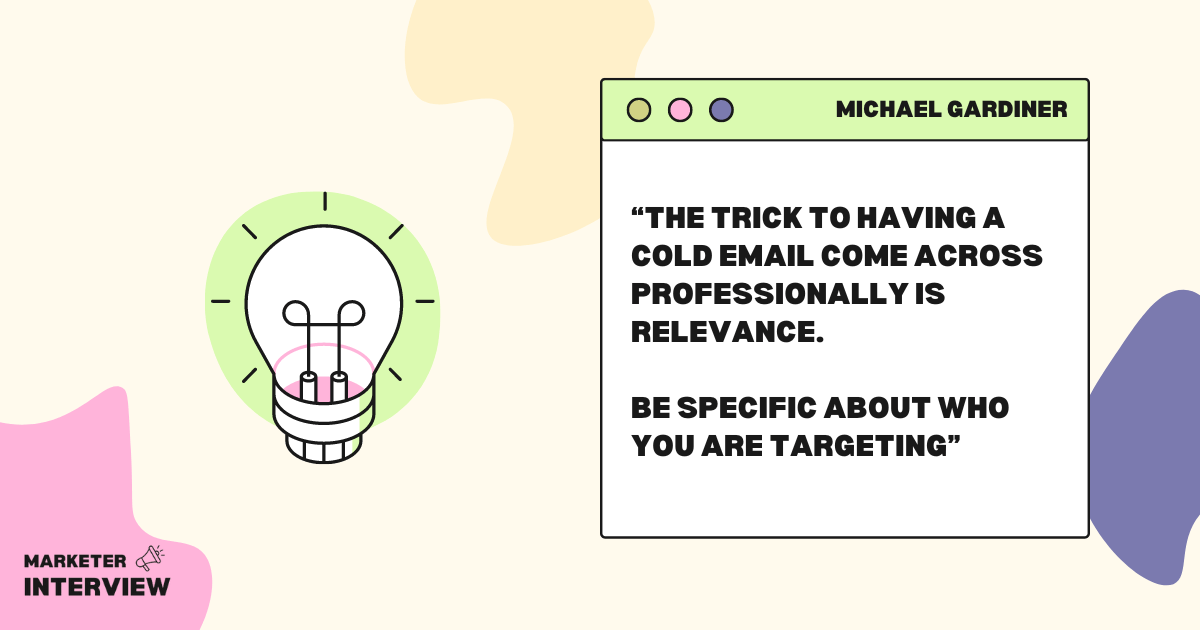
In the dynamic landscape of marketing tools and software, which specific ones do you rely on for optimizing your outbound prospecting efforts?
The following is the tech stack I currently use for cold email:
- Domains: Google, Porkbun, and GoDaddy
- Emails: Google, Microsoft
- Finding emails: Contact Quack, Apollo, Scrubby, and Linkedin Sales Navigator.
- Sending cold emails: Instantly and Smart Lead.
Any marketer or entrepreneur should deeply consider starting a YouTube channel.
It’s a great way to find new prospects and nurture and engage with existing prospects.
On my channel, I record videos mainly about getting clients with cold emails and how to grow a B2B services company in general.
I make videos based on the information I wish I had known when I started years ago.
My channel has funneled dozens of customers into my agency, Done For You Meetings, and my coaching program, Grow B2B, provides free resources to those who aren’t ready to be a customer but still want to learn about prospecting.
As someone deeply involved in outbound prospecting, what trends do you foresee in this field, and how should marketers prepare to adapt?
There are multiple small trends I’m seeing, but from a macro perspective, there are two main ones:
- Increased competition requiring personalization and having a great offer in order to stand out.
- Deliverability is becoming more complex, which will weed out many into the spam box, opening up more room for diligent cold emailers.
Neither of these is a reason not to send cold emails, but things to consider to stay ahead of your competitors.
